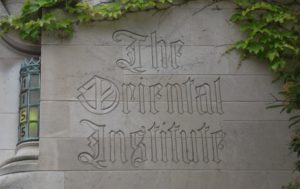
Fabricius is a Google Arts & Culture project to use AI to translate Egyptian hieroglyphics.
Use it to translate your emoji-filled text messages to hieroglyphics with the Fabricius Text to Hieroglyphics Converter, or if you have some ancient hieroglyphics you seriously want translate, use the workbench (only works on desktops and Middle Egyptian).
The journey began with The Hieroglyphics Initiative, a Ubisoft research project that was launched at the British Museum in September 2017 to coincide with the release of Assassin’s Creed Origins. Working with Google and development agency Psycle Interactive, the project sought to identify whether machine learning could transform the process of collating, cataloguing and understanding the written language of the Pharaohs.
Fabricius: About. https://artsexperiments.withgoogle.com/fabricius/en/about




